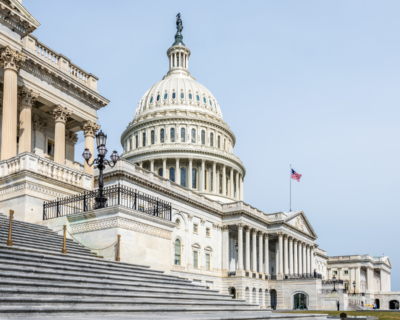The Cap and Trade Illusion
The Obama administration intends on implementing a ‘Cap and Trade’ bill by May of 2010 in hopes of curbing the emission of harmful greenhouse gases and reducing pollution. Not only would the legislation fail to effectively reduce emissions it would cost American citizens billions in taxes. Here’s what you need to know about the ‘Cap and Trade’ fallacy:
1) The ‘Cap and Trade’ bill will not reduce any greenhouse gas emissions. In a Washington Post opinion piece, two Environmental Protection Agency attorneys lay out this scenario: “Suppose, for example, that a landowner is paid not to cut his forest so that it can continue capturing carbon dioxide from the atmosphere. Purchasing this offset allows owners of a coal-fired power plant to burn extra coal, above the cap. But if the landowner wasn’t planning to cut his forest, he just received a bonus for doing what he would have done anyway. Even if he was planning to cut his forest and doesn’t, demand for wood isn’t reduced. A different forest will be cut. Either way, there is no net reduction in production of greenhouse gases. The result of this carbon “offset” is not a decrease but an increase — coal burning above the cap at the power plant.”
2) The American taxpayer will be footing the bill, not the polluters. Washington politicians are taking pride in the fact that they are going to make polluters pay. In reality, this is simply not true. The Wall Street Journal Points out, “Once the government creates a scarce new commodity — in this case the right to emit carbon — and then mandates that businesses buy it, the costs would inevitably be passed on to all consumers in the form of higher prices.” Those affected the most are expected to be the “95% of working families” which Obama initially promised would not incur any new taxes. The poor and middle classes currently consume the most, especially on gas to drive to and from work, groceries, and home heating. However, the Obama administration claims that such “price increases are essential to the success of a cap-and-trade program.”
3) The cost of the ‘Cap and Trade’ legislation will be in the trillions. The Obama administration initially estimated that in order to reduce emission levels by 14% of the 2005 level by 2020 it would cost an estimated $13 or $14 per ton of CO2. However, the Congressional Budget Office “scored a similar bill last year, it expected prices to start at $23 and rise to $44 by 2018,” per CO2 ton. The non-partisan CBO projected the total value of the ‘Cap and Trade’ allowance at $902 billion over the first decade alone.
The ‘Cap and Trade’ legislation appears to be yet another on the list of Obama’s broken campaign promises. If the bill is passed it will undoubtedly do more harm than good.




